In the lead-up to ‘The 8th Asia Pacific Triennial of Contemporary Art’ (APT8), QAGOMA’s conservation staff applied their skills and knowledge to several artworks that are on display. We share some background information on one of the exhibition’s major works, which required the collaboration of the Queensland Museum.
Collaboration with the Queensland Museum

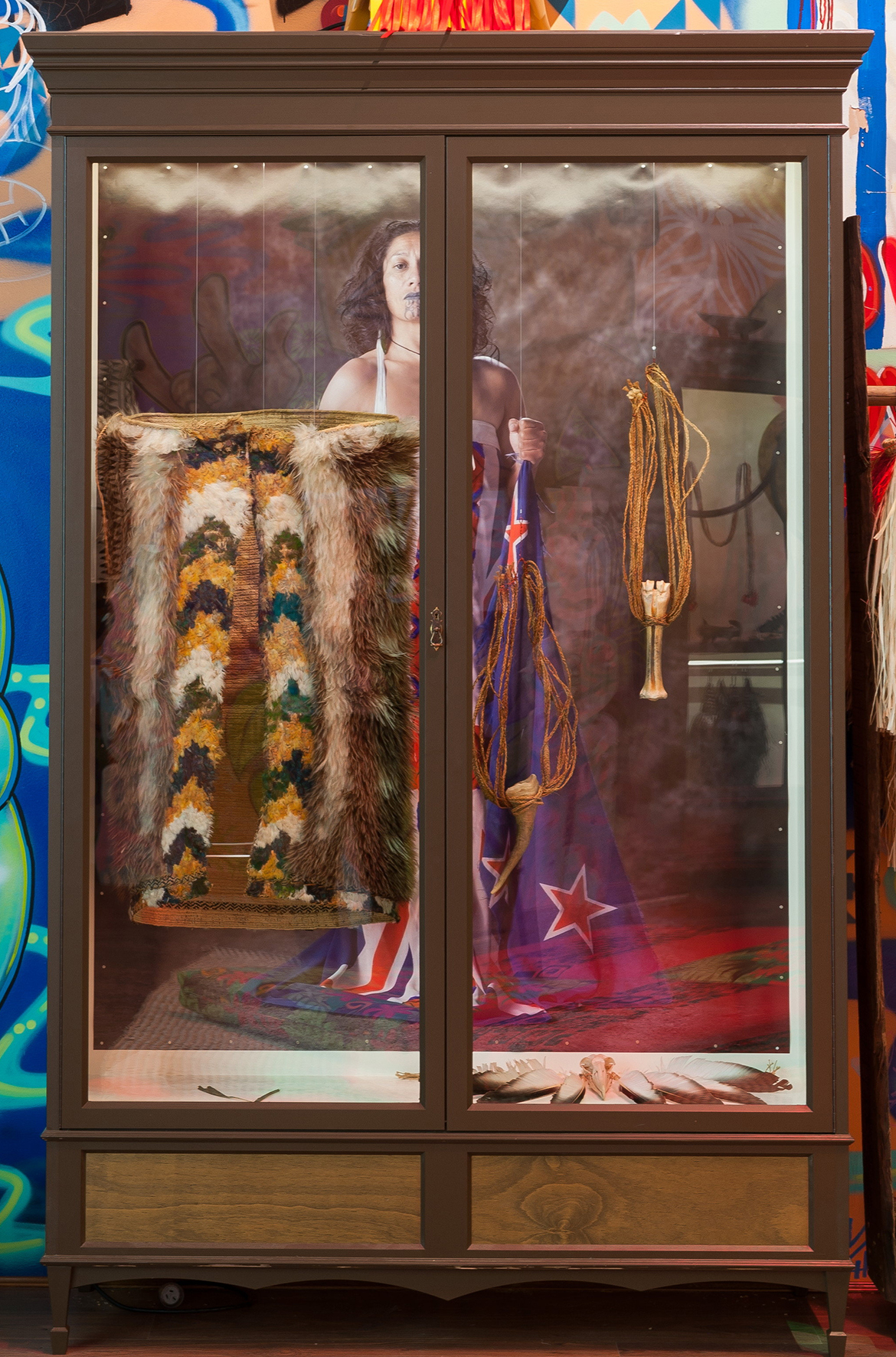

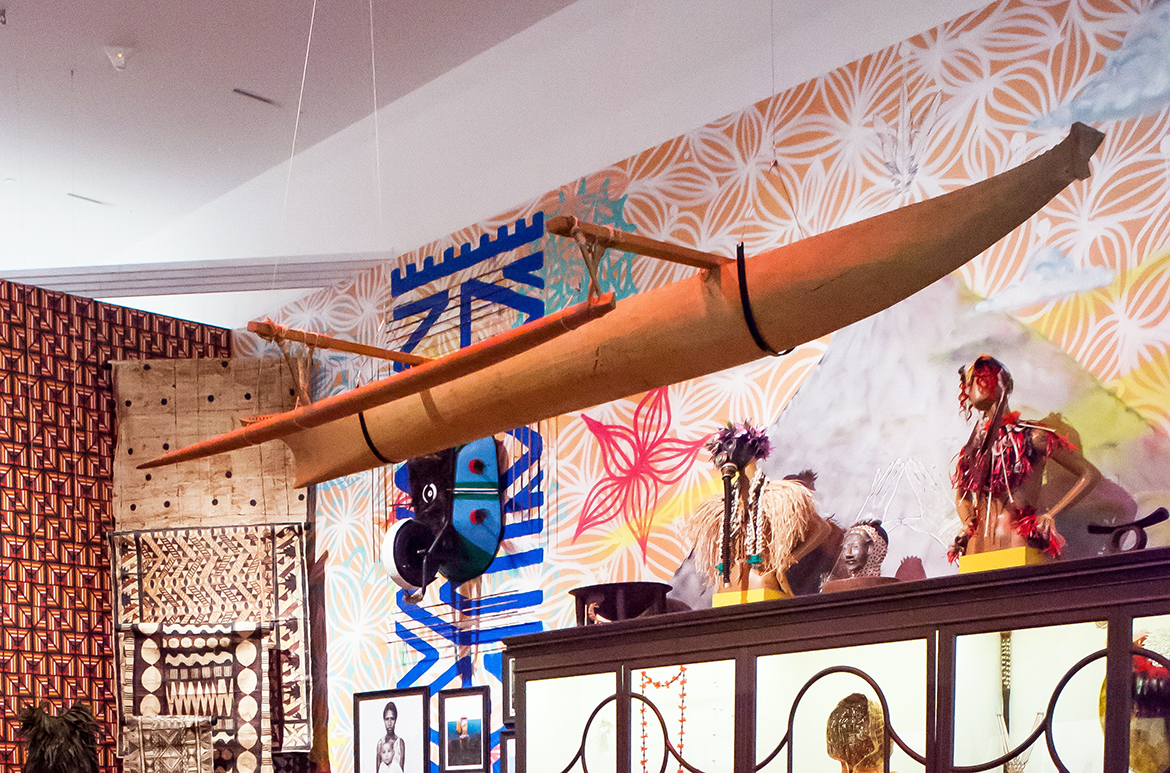
Rosanna Raymond’s APT8 installation SaVAge K’lub is a meeting place, a locus of activity and happenings, set in the scene of a late-nineteenth century gentlemen’s club. She presents ideas about space and activation in response to historical practices of collecting, storing and displaying cultural objects. Ruth McDougall, Curator, Pacific Art, explains that Raymond seeks to redefine museum ‘care’ to incorporate ideas of animation, use and community connection:
Gently, but resolutely, she embarks on a process of educating and enabling curators, conservators, registrars and other staff across three Queensland cultural institutions1 to understand the importance of Pacific people and their bodies in order to ensure the long-term ‘care’ and wellbeing of the tāonga (cultural treasures) of which they are custodians.
The objects and artworks that adorn the space and fill the cabinets have been sourced by Raymond from local museum and university collections, from individuals and from communities across the Pacific region. The volume of objects necessary to compose the installation, along with the logistics required to transport, conserve, and prepare these objects for display, places SaVAge K’lub in the realm of ‘a museum within a museum’.
SaVAge K’lub
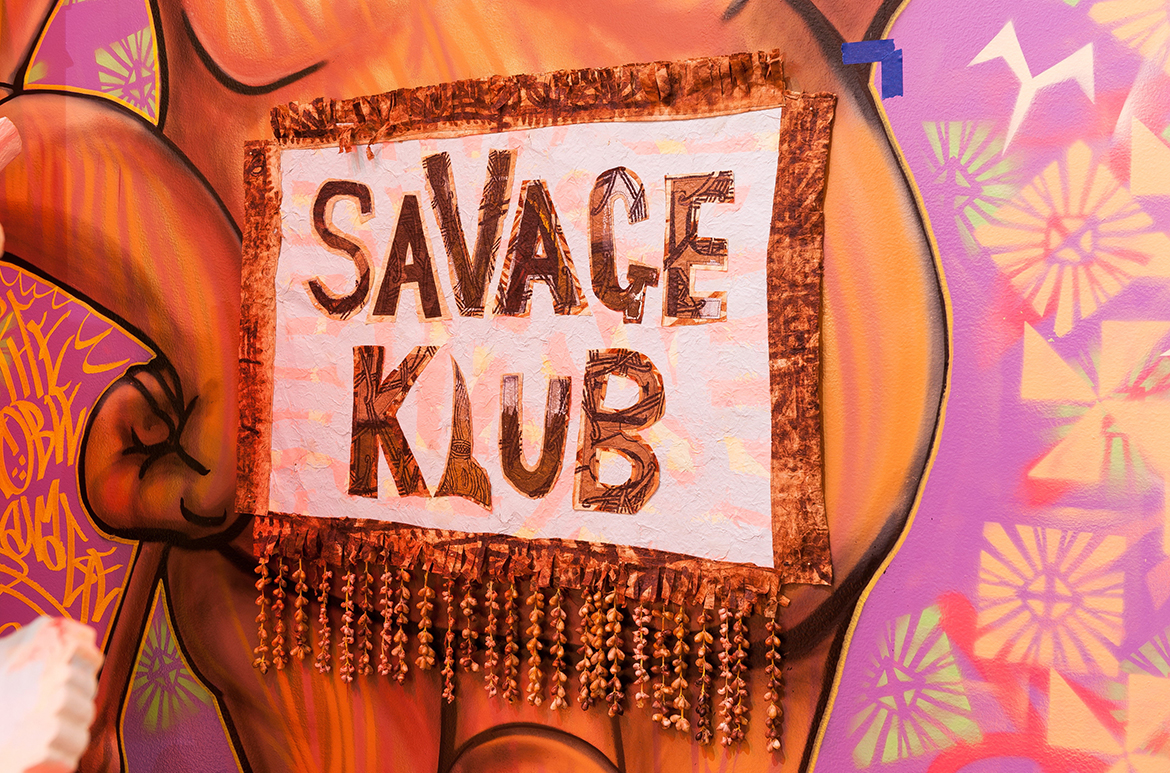
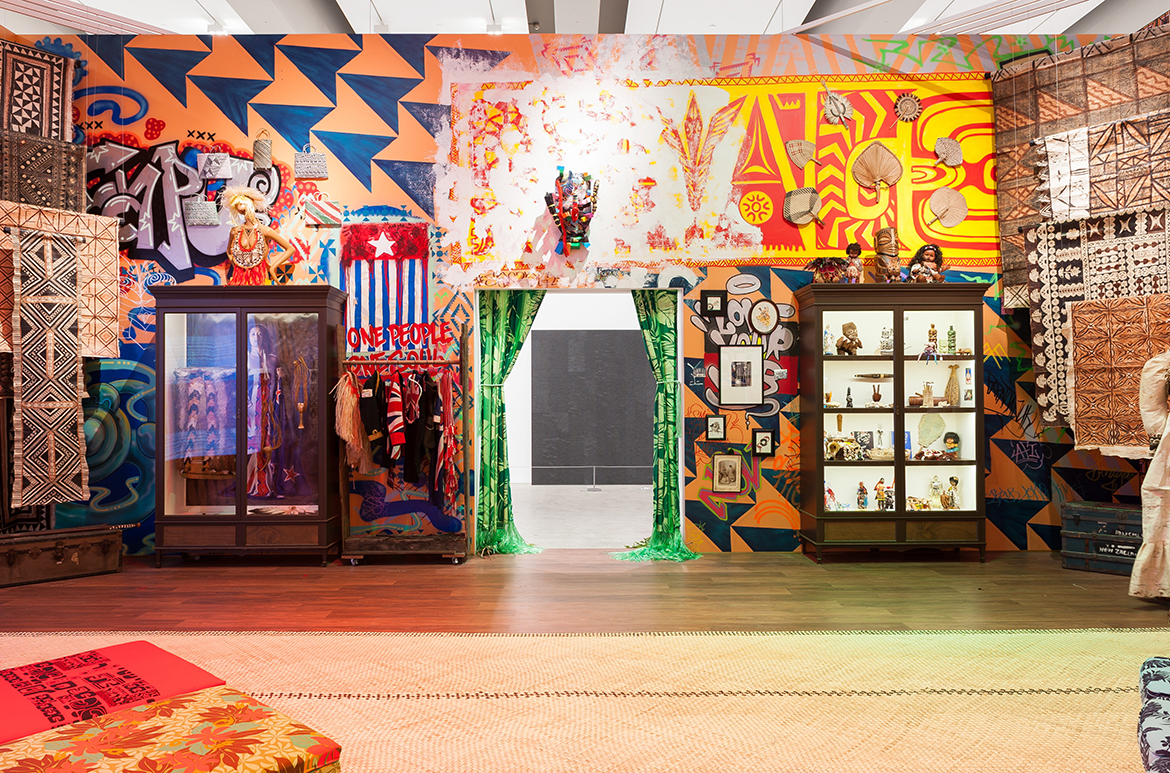
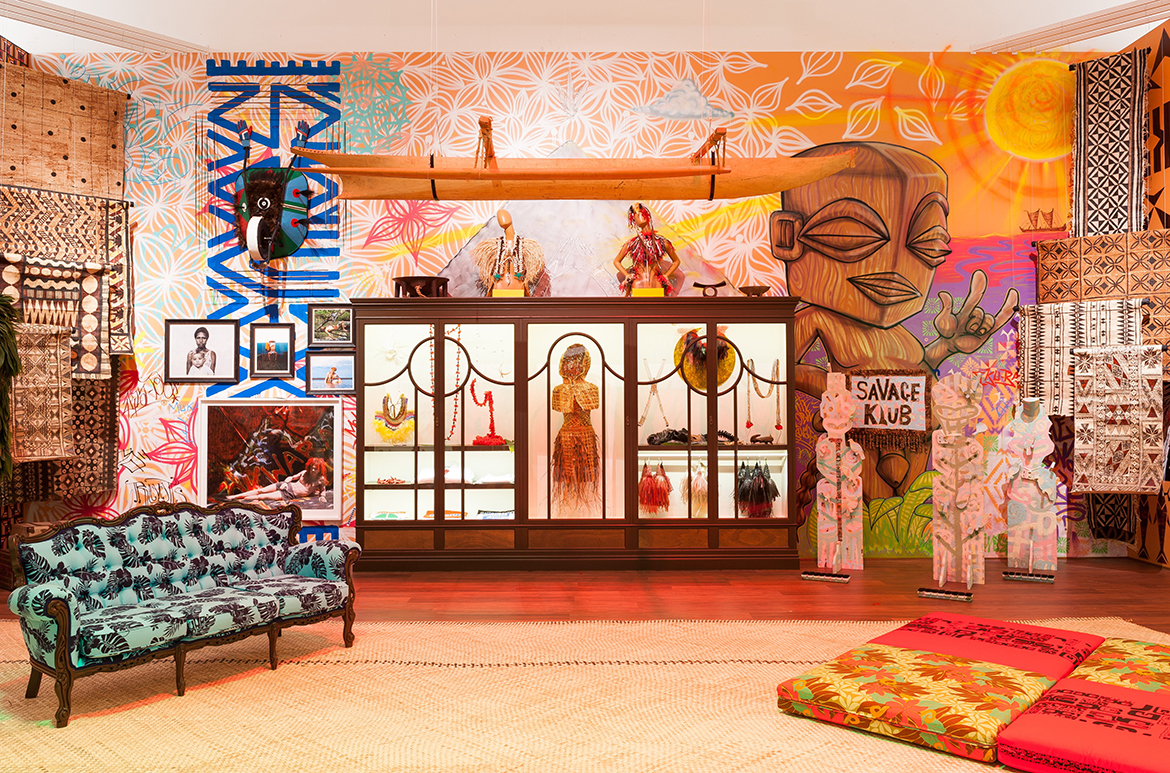
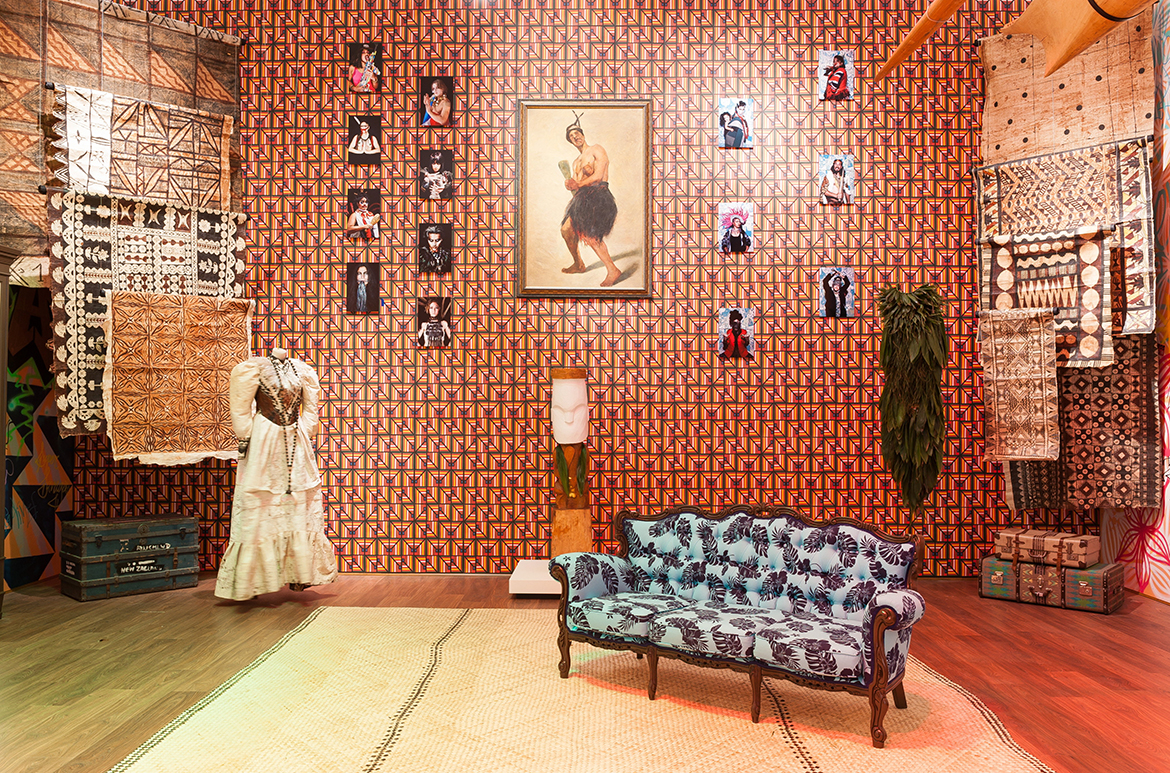
One of the first priorities for objects and artworks entering the Gallery is planning for their care while on site, in conjunction with the safe management of the Gallery’s Collection. Around 300 objects were borrowed for the SaVAge K’lub installation: on arrival at the Gallery, each of these was assessed, in accordance with the Gallery’s collection management procedures. Objects that came from international lenders were first evaluated by Australian Quarantine and Inspection Service on entry into the country. As part of the Gallery’s preventive conservation program, all plant- and timber-based objects underwent low-temperature treatment before being made available for display. This involves freezing objects at minus 18 degrees Celsius to ensure that they are free of insects that might pose a risk to the rest of the Gallery’s Collection.
A range of objects for the SaVAge K’lub was selected from the collection of the Queensland Museum. Gallery conservators, registrars, designers and workshop officers benefited from our proximity to and relationships with our precinct neighbour. In the lead-up to installation, QAGOMA staff were able to undertake a great deal of preparatory work at the Queensland.
Museum on objects that had been selected for loan. This included multiple visits to view and document objects, to discuss the logistics of transport, and prepare objects for treatment and display. Two particular loans posed interesting conservation and display issues — a kahu kiwi (feathered cloak) acquired in 1925, and a contemporary waka (outrigger canoe), created for Brisbane’s Warana Festival in 1989.2
QAGOMA sculpture conservator Liz Wild and I worked closely with Queensland Museum conservators Cathy ter-Boght and Jennifer Blakely, to devise a suitable display system for the kahu kiwi, a delicately constructed plant-fibre cloak intricately woven with kiwi and other bird feathers. The mounting system uses a ridged, shaped supporting ring onto which the cloak is attached using a discrete system of magnets. The waka presented interesting challenges due to the scale of the object. The canoe is four metres long, the binding that lashes the outrigger to the canoe has completely failed, and it was necessary to suspend the object high within the installation space. All of these factors needed to be considered in the display of the object. In order to design a safe and suitable display system, it was necessary for several Gallery staff members to view, measure and document the canoe before arranging its transfer to the GOMA conservation laboratory. Artworks such as SaVAge K’lub present a range of interesting challenges for conservators, designers, registrars and installation staff. Connecting with our Queensland Museum colleagues and working together to conserve the kahu kiwi and the waka will be an enduring legacy of this project.
Amanda Pagliarino is Head of Conservation and Registration, QAGOMA
Endnotes
1 QAGOMA, Queensland Museum, and the University of Queensland Anthropology Museum.
2 The Warana Festival, a program for people’s entertainment, commenced in 1961 and later evolved into the Brisbane Festival in the mid 1990s. http://www.brisbanefestival.com.au/about/history
Watch | Savage Klub’s performance by Pacific artists
The Asia Pacific Triennial of Contemporary Art (APT) is the Gallery’s flagship exhibition focused on the work of Asia, the Pacific and Australia / Queensland Art Gallery | Gallery of Modern Art / 21 November 2015 – 10 April 2016
#QAGOMA


Love this article! You were all a pleasure to work with and it made our time in Queensland so much better. Thanks for looking after the savages!
Hi Suzanne. Thanks for making contact. We love’d having you all here :)